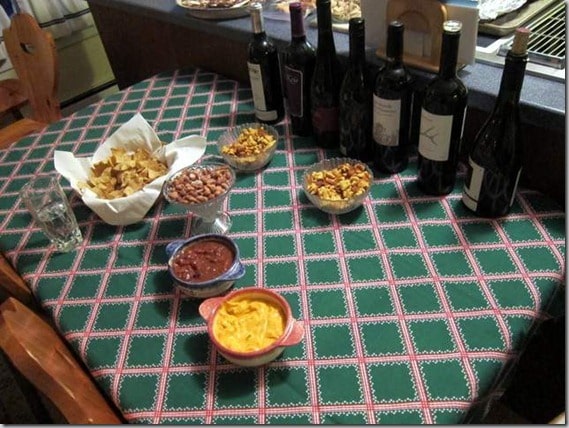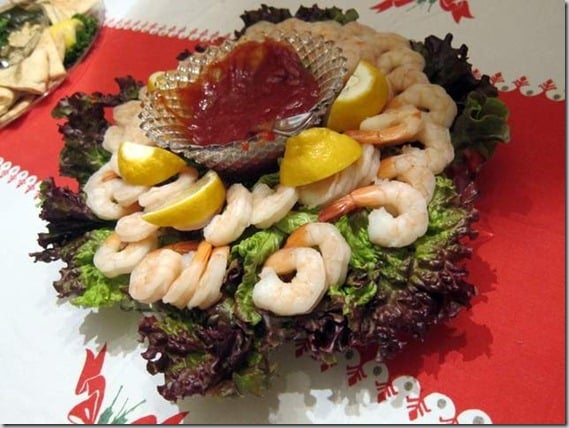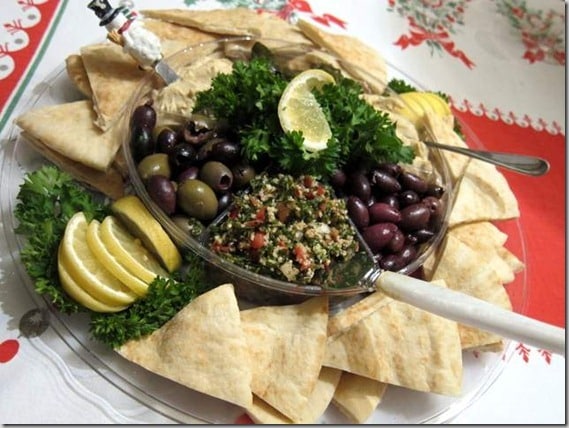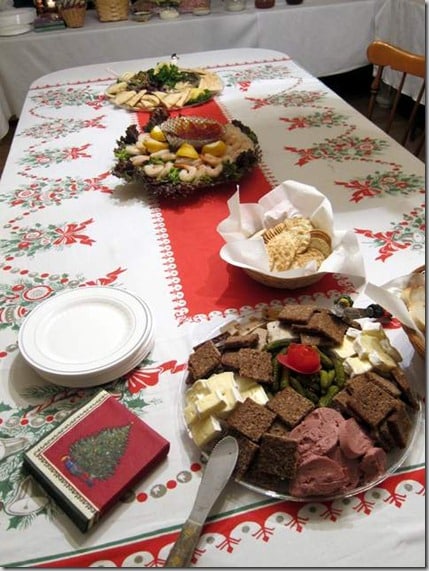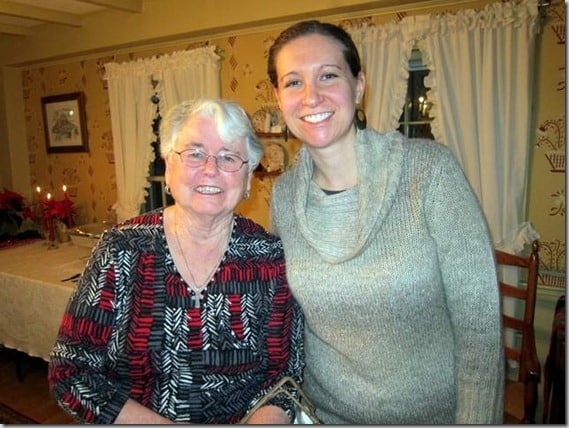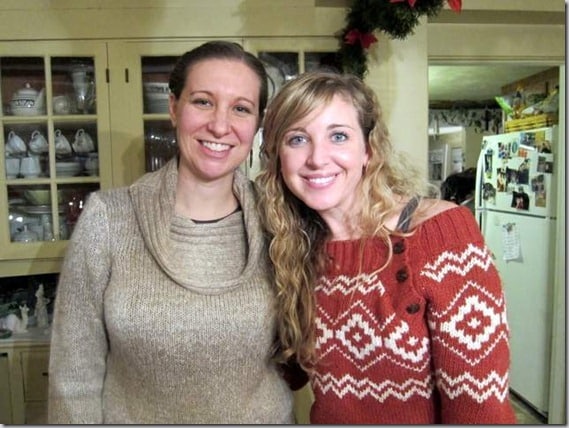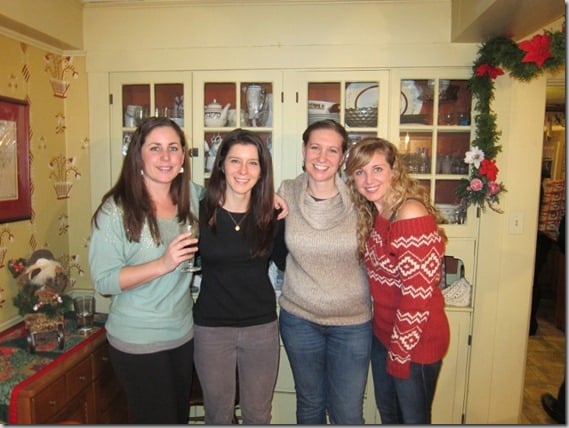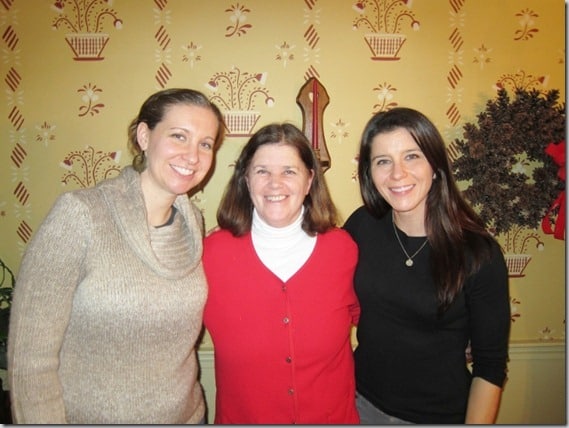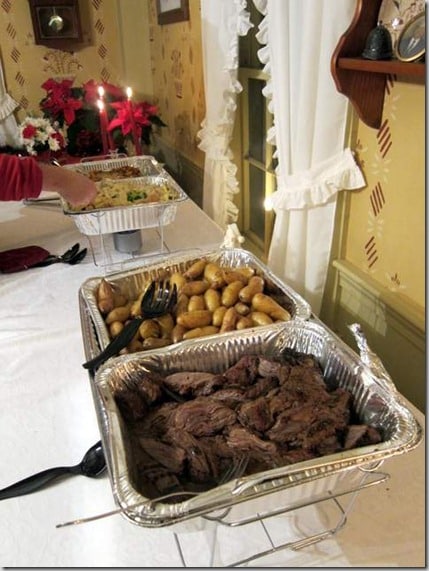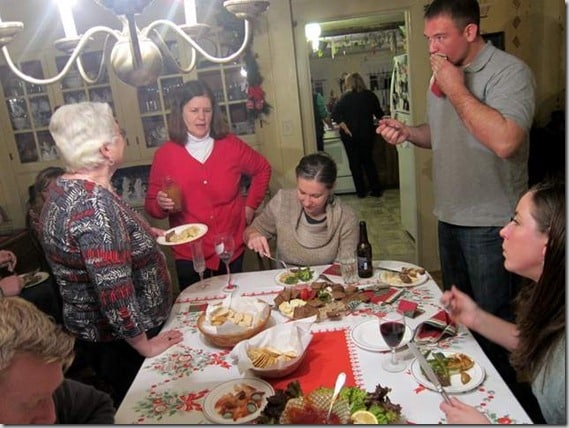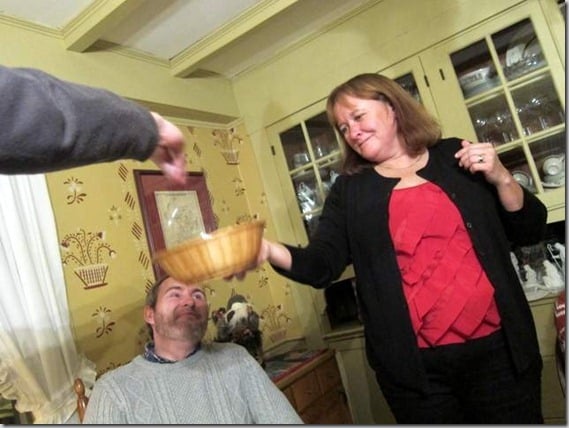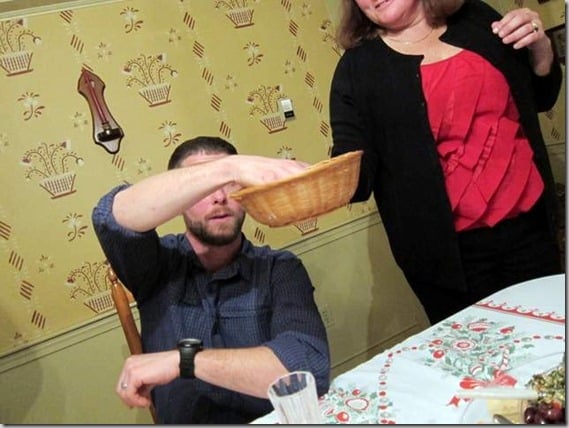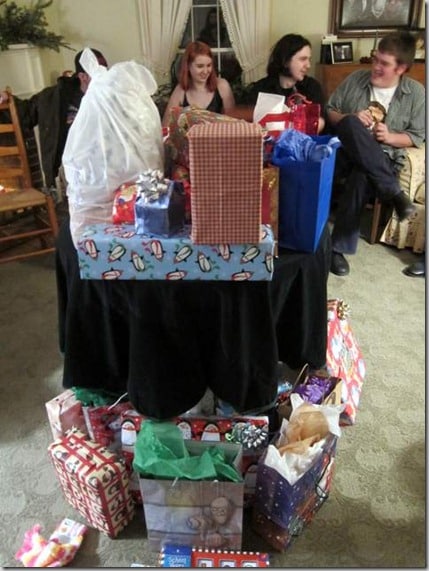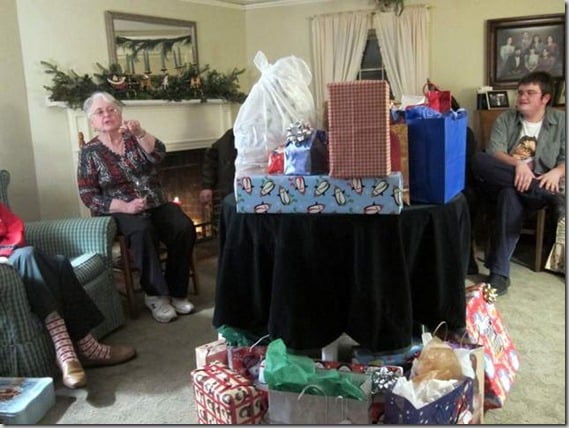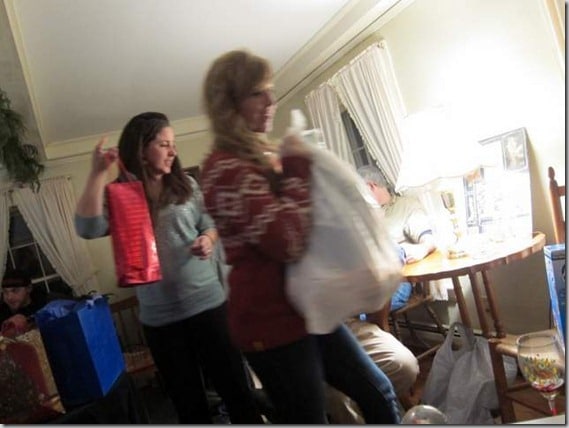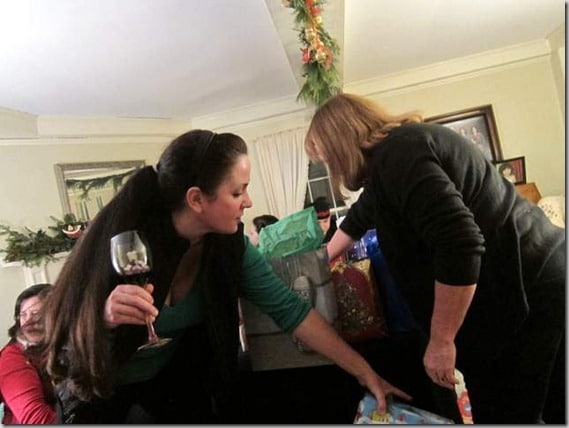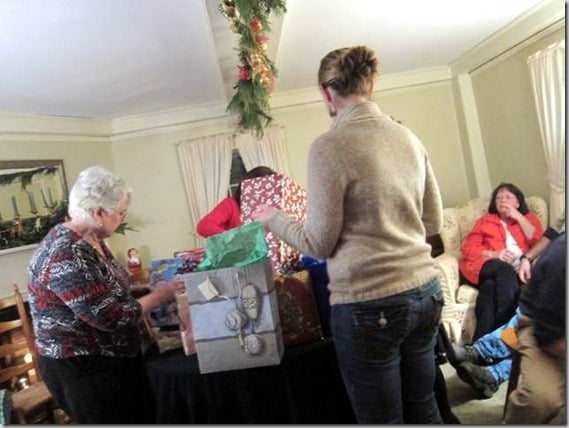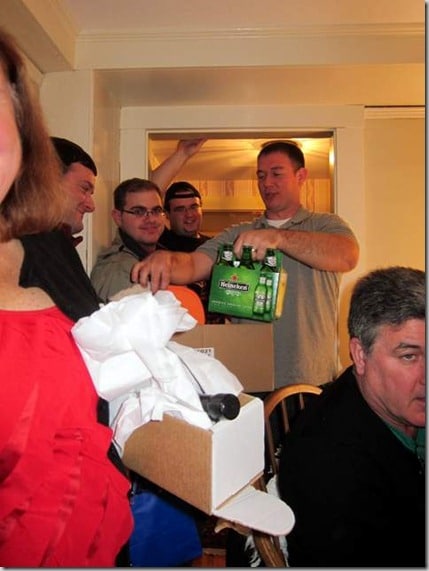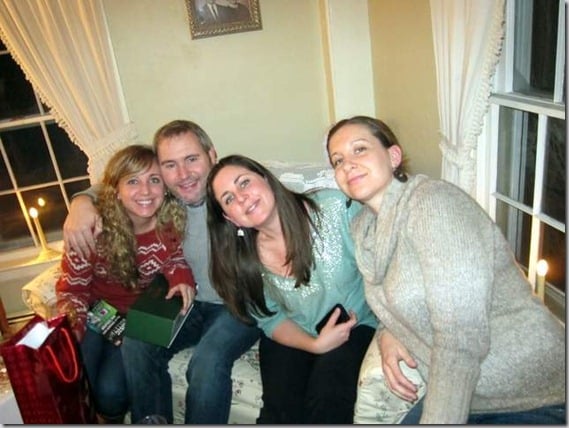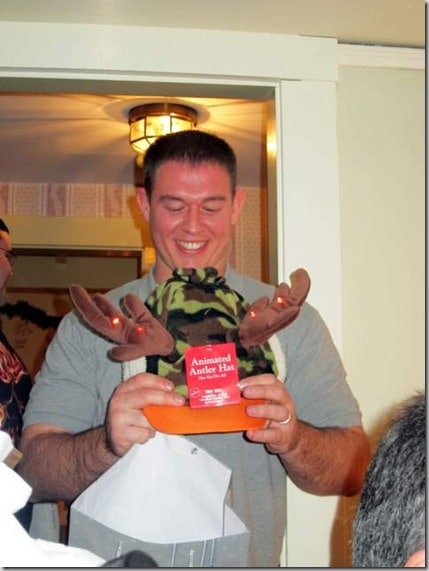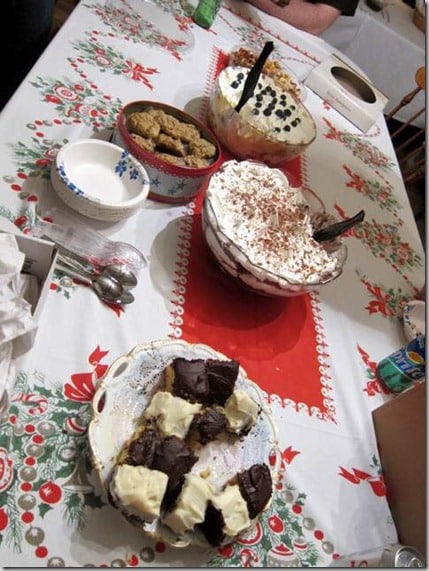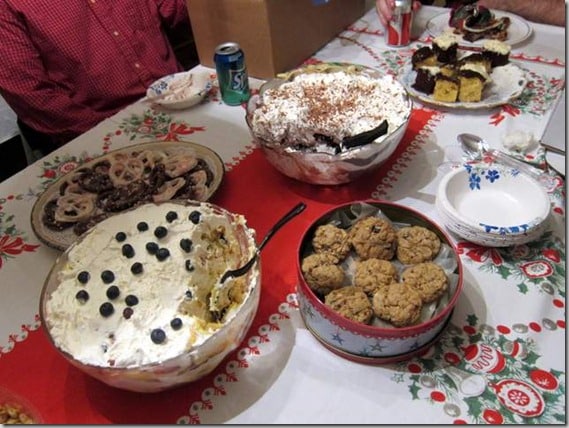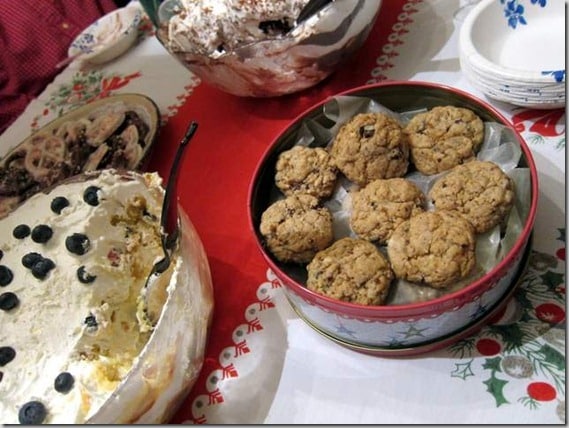| Coordinates | 40?45?0?N73?52?0?N |
|---|---|
| Official name | Homs |
| Other name | |
| Native name | ??? |
| Type | City |
| Nickname | The city of Ibn al-Walid |
| Settlement type | |
| Leader title1 | President of City Council |
| Leader name1 | Nadia Kseibi |
| Established title | Settled |
| Established date | 2000?BCE |
| Established title2 | |
| Established title3 | |
| Established date3 | |
| Unit pref | Metric |
| Area total km2 | 48 |
| Area urban km2 | 76 |
| Area metro km2 | 104 |
| Area blank1 sq mi | |
| Population as of | 2004 census |
| Population total | 652,609 |
| Population metro | 750,501 |
| Population blank1 title | Ethnicities |
| Population blank2 title | Religions |
| Population density blank1 sq mi | |
| Timezone | EET |
| Utc offset | +3 |
| Timezone dst | EEST |
| Utc offset dst | +2 |
| Elevation m | 501 |
| Elevation ft | |
| Postal code type | |
| Area code | 31|31 |
| Website | http://www.homscitycouncil.org.sy |
| Footnotes | }} |
Homs ( / ALA-LC: ?im?), previously known as Emesa (Greek: ?????, Emesa), is a city in western Syria and the capital of the Homs Governorate. It is above sea level and is located north of Damascus. Located on the Orontes River, Homs is also the central link between the interior cities and the Mediterranean coast.
Homs is a major industrial center, and with a population of at least 652,609 people, it is the third largest city in Syria after Aleppo to the north and the capital Damascus to the south. Its population reflects Syria's general religious diversity, composed mostly of Arabic-speaking Sunni Muslims and Alawite and Christian minorities. The city boasts a number of historic mosques and churches and is close to the Krak des Chevaliers, a world heritage site.
Homs did not emerge into the historical record until the 1st century BCE at the time of the Seleucids. It later became the capital of a kingdom ruled by the Emesani dynasty who gave the city its name. Originally a center of worship for the sun god El-Gabal, it later gained importance in Christianity under the Byzantines. Homs was conquered by the Muslims in the 7th-century and made capital of a district that bore its current name. Throughout the Islamic era, Muslim dynasties contending for control of Syria sought after Homs due to the city's strategic position in the area. Homs began to decline under the Ottomans and only in the 19th century did the city regain its economic importance when its cotton industry boomed. During French Mandate rule, the city became a center of insurrection and, after independence in 1946, a center of Baathist resistance to the first Syrian governments. Homs has played a central role in the ongoing Syrian civil war against the Baathist government and since May 2011 has been under siege by the Syrian Army.
Etymology
"Emesa" is a compound of "Ham-Es", with the Es representing an assemblage of the locally revered sun god in (El-Gabal) in ancient times. The name "Emesa" or "Hemesa" is also attributed to "Emesenoi", the name of the Arab tribe that ruled the area before its incorporation into the Roman Empire. When the name of the tribe became attached to the city is indiscernible, but is generally thought to have been used under the Romans."Emesa" was shortened to "Homs" or "Hims" by its Arab inhabitants, many of whom settled there prior to the Muslim conquest of Syria. This name has been preserved throughout the period of Islamic rule continuing to the present day. It was known as "la Chamelle" by the Crusaders, although they never ruled the city. A second possibility about the origin of the city's modern name is that it is an Arabic form of the city's Latin name "Emesus", derived from the Greek "Emesa" or "Emesos".
History
For roughly 2,000 years, Homs has served as a key agricultural market, production site, and trade center for the villages of northern Syria. It has also provided security services to the hinterland of Syria, protecting it from invading forces. Excavations at the Citadel of Homs indicate that the earliest settlement at the site dates back to around 2300?BCE. Biblical scholars have identified the city with Zobah mentioned in the Bible. In 1274?BCE, a battle took place between the forces of the Egyptian Empire under Ramesses II and the Hittite Empire under Muwatalli II at the city of Kadesh on the Orontes River near Homs. It was possibly the largest chariot battle ever fought, involving perhaps 5,000?6,000 chariots.Emesani dynasty and Roman rule
Homs itself may have been founded by Seleucus I Nicator who established the Seleucid Empire upon the death of Alexander the Great, although the city did not emerge in the light of history until the 1st-century BCE. At this time, Greek philosopher Strabo spoke of a tent-dwelling tribe called the "Emesani" living in the area around the Orontes and south of the Apamea region. They were a Syriac tribe in the area and settled in Emesa?which derived its name from them. Upon Pompey's incorporation of the Seleucid state of Syria into the Roman Empire in 64?BCE, the Emesani dynasty were confirmed in their rule as client kings of the Romans for aiding their troops in various wars. Their chief at the time, Sampsiceramus I, gained the status as King of Emesa, but their capital was at Arethusa, a city north of Emesa, also along the Orontes River. At its greatest extent, the kingdom's boundaries extended from the Bekaa Valley in the west to the border with Palmyra in the east, and from Yabrud in the south to al-Rastan (Arethusa) in the north. The kingdom of Sampsiceramus I, was the first of Rome's Arab clients on the desert fringes.The city of Emesa grew to prominence after the new-found wealth of the Emesani dynasty, governed first by one of the sons of Sampsiceramus I, Iamblichus I who made it the kingdom's capital. The Emesani proved their loyalty to Rome once more when they aided Gaius Julius Caesar in his siege of Alexandria in 48?BCE, by sending him army detachments. Subsequently, they became embroiled in the Roman Civil War between the rebelling Mark Antony and the pro-Caesar Octavian. Iamblichus I took the side of Octavian, and so upon encouragement from Antony, Iamblichus's brother Alexio I usurped the throne and put Iamblichus I to death in 31 BCE. Octavian's forces prevailed in the war, however, and as a result the kingdom's throne was reverted to Iamblichus II (the son of Iamblichus I) after Alexio I was executed for treason. Under the stable rule of Iamblichus II, emerged a new era of peace from 20 to 14 BCE, known as Emesa's "Golden Age." In 32, Heliopolis and the Bekaa Valley came under the kingdom's control.
Relations with the Roman government grew closer when King Sohaemus inherited the kingship. Under him, Emesa sent the Roman military a regular levy of archers and assisted them in their siege of Jerusalem in 70. Sohaemus had died in 73 and was succeeded by his son, Alexio II. Despite the fact that the Emesani dynasty were loyal allies to Rome, for unknown reasons the Roman state reduced the autonomous rule of the Emesani dynasty. Alexio II and his priest king successors had only ceremonial authority. It remains unclear why this occurred to the Emesani dynasty. Alexio II died in 78 and he was succeeded by his son Sampsiceramus III. The generations after Alexio II, are not recorded sufficiently to accurately present a pedigree.
Under the Romans, Emesa began to show attributes of a Greek city-state and traces of Roman town planning still remain. Its transformation into a major city was completed under the reign of Emperor Antoninus Pius (138?161) when Emesa began to mint coins. By the 3rd-century, it grew prosperous and well integrated into the Roman Orient. This was partly due to the marriage of Emperor Lucius Septimius Severus to a woman from a family of notables based in Emesa. It attained the coveted status as a Roman colonia by Severus, and two other emperors of Severan Dynasty were raised in Emesa. One of them was Elagabalus who served as the high priest at the Temple of El-Gebal, the local sun god. He brought the image of this god, a conical black stone, to the Elagabalium in Rome.
Emesa also grew wealthy because it formed a link in the eastern trade funneled through Palmyra, however, this dependence also caused the city's downfall when Palmyra sank to insignificance in the 4th-century. Nonetheless, Emesa at this time had grown to rank with the important cities of Tyre, Sidon, Beirut, and Damascus. It also continued to retain local significance, because it was the market center for the surrounding villages. The city remained a strong center of paganism, because of the Temple of El-Gabal. After one of his victories over Zenobia, Emperor Aurelian visited the city to pay thanks to the deity.
Due to the strength of the pagan sun cult in Emesa, Christians initially did not settle in the city. Eusebius writes that Silvanus, the city's first bishop, had no jurisdiction over the city, but the surrounding villages. He was executed by Emperor Julian and succeeded by Bishop Antonius?the first bishop to settle Emesa. By the 5th-century, Christianity was well established under the Byzantine Empire; however, few ancient Christian inscriptions exist in Homs today. Under the Byzantines, the city became an important center for Eastern Christianity. Initially a diocese, Homs was given the status of ecclesiastical metropolis after the discovery John the Baptist's head in a nearby area in 452.
Arab Caliphate
Prior to the Muslim conquest of Syria, Arab tribes, particularly the Banu Kalb settled around Emesa, ensuring its position as an important Yemeni center. The Byzantine emperor Heraclius abandoned the city?which served as his headquarters?after the defeat of his army to that of the Rashidun Muslims under Umar ibn al-Khattab during the Battle of Yarmouk in southern Syria. In 637 CE, the Rashidun army led by Khalid ibn al-Walid captured Emesa peacefully as the city agreed to pay a substantial ransom of 71,000 to 170,000 dinars. The caliph Umar established Homs as the capital of Jund Hims, a district within the province of Bilad ash-Sham, encompassing the towns of Latakia, Jableh, and Tartus along the coast, Palmyra in the Syrian Desert and the territory in between, including the town of Hama. Homs was likely the first city in Syria to have a substantial Muslim population.The Muslims transformed half of St. John's Church into the city's Friday Mosque (Great Mosque of al-Nuri) and Homs soon became a center of Islamic piety since some 500 companions of Muhammad settled there after its conquest. The tombs of Khalid ibn al-Walid, his son Abd al-Rahman, and Ubaid Allah, the son of Caliph Umar are located in the city. During the conflict between the Umayyads and Ali, the inhabitants of Homs allied themselves with Ali and when the latter was defeated, the Umayyad caliph Mu'awiyah hived the northern half of Jund Hims to form a separate district, Jund Qinnasrin, apparently as punishment. Ali's oratory (mash-had 'Ali) was located in the city, and Islamic tradition claims his fingerprints are engraved on it. Despite repression by the Umayyads, Homs remained a center of Shia Islam for a while longer. As a stronghold of the Banu Kalb, the city became involved in the latter's conflicts with the Qais tribal faction. The last Umayyad caliph, Marwan II, enjoyed the support of the Qais and subsequently razed the city walls in response to a rebellion by the Banu Kalb.
In 750 the Abbasids wrested control of Syria, including Homs, from the Umayyads, but the Arab tribes continued to revolt against the Caliphate. Despite the prosperity Homs experienced during this era, Abbasid rule was generally not welcomed nevertheless. During and after the reign of caliph Harun al-Rashid (796-809), the Abbasid authorities sent numerous punitive expeditions against Homs. Under the reign of al-Mutawakkil, in October 855, an uprising by the Christians of the city erupted in response to additional taxation. The caliph put down the revolt by expelling Christians from the city, burning down its churches, and executing members of its leadership.
With Abbasid rule over the Caliphate weakening in the mid 9th-century, Homs became sought after by rebel dynasties contending for control of Syria due to the city's strategic position. Initially, the Egypt-based Tulunids came into control of it, but they were forced out by the Aleppo-based Hamdanids who were briefly succeeded by the Qarmatians, after their Turkish rebel ally Aftakin invaded northern Syria and established Homs as his base. In 891 Muslim geographer al-Yaqubi noted that Homs was situated along a broad river which served as a source of drinking water for the inhabitants. It was one of the largest cities in Syria and had several smaller districts surrounding it. In 944 the Hamdanids took definitive control of the city, dominating it until 1016. Arab geographer al-Mas'udi claimed in the early 10th-century that Homs was "noted for the personal beauty of its inhabitants." In 985 al-Muqaddasi noted that Homs was the largest city in all of Syria, but it had suffered "great misfortunes" and was "threatened with ruin." He stated that when the city was conquered by the Muslims they turned half of its church into a mosque.
For roughly thirty years during the 10th-century, Homs was raided by the Byzantines and its inhabitants were subject to slaughter and plunder while the city's mosque was briefly restored as a church. Throughout most of the 11th-century, the Byzantine raids receded greatly and the Mirdasids of the Banu Kalb tribe ruled over Homs, replacing the Hamdanids. Inclined towards Shia Islam, they did not oppose the Shia Fatimid Caliphate of Egypt which was aiming to extend its rule into northern Syria and Iraq at the time. This precipitated a Sunni Muslim reaction led by the Seljuk Turks who occupied Homs under the leadership of Aq Sunqur al-Hajib in 1090.
Seljuk, Ayyubid, and Mamluk rule
The First Crusade was launched in 1096, and in 1098, the Crusaders captured Antioch to the northwest, looted Ma'arat al-Numan, and finally besieged Homs itself. Although they managed to cut the city off from its main port Tartus, they failed in taking the city. Soon after, Homs came under the control of the Seljuk ruler of Damascus who transformed it into a large, fortified camp and key fortress effectively preventing the Crusaders from penetrating deeper into Muslim territory. Immune from attack, Homs became a point where the Muslims could marshal their forces and launch raids against Crusader holdings along the Mediterranean coast. In the early 12th-century, the Seljuks engaged in internal fighting, during which Homs was often a prize. In 1149 the Mosul-based Zengids under Nur al-Din captured the city.
Muslim geographer Al-Idrisi noted in 1154 that Homs was populous, had paved streets, possessed one of the largest mosques in Syria, contained open markets, and was frequented by travelers attracted to its "products and rarities of all kinds." He also reported that its residents were "pleasant; living with them is easy, and their manners are agreeable. The women are beautiful and are celebrated for their fine skin." A series of earthquakes in 1157 inflicted heavy damage upon Homs and its fortress, then in 1170, a minor quake finished off the latter. However, because of its strategic importance, being opposite of the Crusader County of Tripoli, the city and its fortifications were soon restored. In 1164 Nur al-Din awarded Homs to Asad ad-Din Shirkuh as a fief, but reclaimed it five years later following Shirkuh's death. The latter's nephew, Saladin, gained control of the city in 1175 and in 1179, after reorganizing his territories in northern Syria, restored the fief to his Ayyubid dynasty. Shirkuh's descendants retained Homs for nearly a century until 1262 with the death of al-Ashraf Musa. In 1225 Arab geographer Yaqut al-Hamawi mentioned that Homs was large, celebrated and walled, having a strongly fortified castle on its southern hill.
Towards the end of Ayyubid rule, Homs remained a centerpiece of the wars between them and the Crusaders, as well as internecine conflicts with the Mongol Empire and the Mamluks. The first battle between the Mongols and the Mamluks took place on December 10, 1260, ending in a decisive Mamluk victory. A second battle was fought on October 29, 1281, also ending in a Mamluk victory. The Mamluks were finally defeated in the Battle of Wadi al-Khazandar, also known as the "Third Battle of Homs," in 1299.
Homs declined politically after falling to the Mamluks under Baibars because their campaigns effectively drove out the Crusaders and the Mongols from the entirety of Syria. At the beginning of the 14th-century, the city was merely the capital of the smallest province of Syria and was often attached to the province of Damascus. Ibn Batuta visited Homs in 1355, writing that it had fine trees, good markets, and a "fine Friday Mosque," noting that all of its inhabitants were Arabs. Timur seized the city in 1400, and later in the 15th-century as Mamluk weakness had brought insecurity to the countryside, Homs was ravaged by Bedouin raids; In 1510 a powerful tribe led by al-Fadl bin Nu'ayr was sent on an expedition by the governor of Damascus to loot the city markets as Homs had failed to pay compensation for his "services."
Ottoman rule
In 1516 Homs was incorporated into the Ottoman Empire and consequently suffered a greater political eclipse, but it continued to thrive as an economic center, processing the agricultural and pastoral products that flowed to it from surrounding districts. Homs was particularly well known for silk and wool weaving, especially the alaja, which was mottled muslin run through with gold threads and used in feminine apparel. This silk was exported as far as the Ottoman capital Istanbul. In addition to weaving industries, there were olive oil presses and water mills for wheat and sesame, while grapes and rice, grown in the surrounding marshlands from the 16th-century, were found in abundance in the city's markets. Moreover, the markets of Homs were the center of a trade in livestock, where flocks of sheep and goats coming from Aleppo met camels and cattle moving north from Damascus.
The coming of the Ottomans brought administrative changes to Homs, as it became the capital city of sanjak ("district") of Homs, attached to the eyalet ("province") of Tripoli?its old rival. At this time, a French visitor noted that the city walls and citadel were in good repair, but all within was in decay and only its covered markets "retained their beauty." In 1785 French traveler, Volney wrote of the city's once great importance and its current "miserable" condition. He described it as a large, but ruined village administratively dependent on Damascus. The Ottomans did little to revitalize Homs or ensure its security against Bedouin raids. Tribal unrest throughout the 17th and 18th centuries resulted in the sacking of its markets on several occasions. Security was even more hampered, when in the 18th-century, the Ottomans tore down the gates of the city's walls.
The countryside of Homs saw an increase in Bedouin raids in the first half of the 19th-century, interrupted by its occupation by Muhammad Ali's Egypt led by Ibrahim Pasha between 1832 and 1840. The city rebelled against Egyptian rule and consequently, the citadel was destroyed when the Egyptians suppressed the revolt. Ottoman rule was soon restored and up to the 1860s, Homs was large enough to form a discrete economic unit of trade and processing of agricultural products from its satellite villages and the neighboring Bedouin tribes.
The local economy was stimulated when the Ottoman government extended security to the city and its surrounding areas; new villages were established and old ones were resettled. However, Homs found itself faced with European economic competition since Ottoman rule was restored. Homs' economic importance was boosted again during the depression of the 1870s, as its cotton industry boomed due to a decline European textile production. The quality and design of cotton goods from Homs satisfied both the lower and upper classes of the local, Ottoman, and foreign markets. There were around 5,000 looms in Homs and nearby Hama, and one British consul referred to Homs as the "Manchester of Syria."
Modern era
Throughout the 20th-century Homs held high political importance in the country and was home to several heads of state and other high-ranking government officials. During the French mandate, Homs was part of the State of Damascus. In Autumn 1925, the city joined Damascus and the southern Druze chieftains in a full-blown revolt against French rule. In 1932 the French moved their military academy from Damascus to Homs, and it remained the only military academy in Syria until 1967. The French authorities had created a unit of Special Forces in which the Alawites were given privileged positions. The military academy in Homs served as a stronghold for these Special Forces. The Homs Military Academy played a major role in the years following Syria's independence, as many of its graduates went on to become high-ranking officers in the Syrian Army, many of them taking part in the series of coup d'?tats that were to follow. An important example was Hafez al-Assad who became the president of Syria from 1971 until his death in 2000.An oil pipeline between Tripoli and Kirkuk was built in Homs in the early 1930s and it followed an ancient caravan route between Palmyra and the Mediterranean. In 1959, an oil refinery was built to process some of this oil for domestic consumption. The city's oil refinery was bombed by the Israeli Air Force (IAF) during the 1973 Yom Kippur War.
Syrian civil war
Homs is one of many cities in Syria where large anti-government demonstrations have been held, part of the wider Syrian civil war. It has been referred to as the "Capital of the revolution." Thousands to tens of thousands gathered in the city's main square on April 17?18, 2011 in a sit-in protesting the regime of current president Bashar al-Assad. At least 62 people were killed by government security forces in armed clashes against local anti-government militants.
Starting on May 6, the city has been under siege by the Syrian Army and security forces. The Syrian government claims it is targeting "armed gangs" and "terrorists" in the area. According to the Syrian opposition, Homs has since become a "blighted city," where authorities regularly block deliveries of medicine, food and fuel to the inhabitants of certain districts. By June, there were near-daily confrontations between protesting residents and Syrian forces. As a result of these circumstances, there have been more deaths in Homs and its vicinity than other areas of Syria. Homs was the first Syrian city where images of al-Assad and his family were routinely torn down or defaced and the first place where Syrian forces used artillery during the uprising. The Center for Documenting Violations in Syria claims that at least 1,770 people have been killed in Homs since the uprising began.
In February 2012 Syrian government forces carried out a major attack on Homs to regain control over the city which was turned into an operation center for the Free Syrian Army, a collection of anti-government fighters and army defectors. Ten days of operations resulted in the deaths of about 700 people in the city according to the Local Coordination Committees. On 1 March the Syrian Army had gained control over the Baba Amr district while lesser clashes continued in other neighborhoods.
Geography
The Governorate of Homs is the largest in Syria. Homs, the governorate's capital, is located in central western Syria, situated along the east bank of the Orontes River in a particularly fertile area. The city is in between the southern outliers of al-Ansariyah mountains located to its west and Mount Lebanon, overlooking the Homs Gap. Because of the gap, the area around Homs receives much more rainfall than interior regions to its north and south. To the east of Homs, is the Syrian Desert. Lake Homs, impounded by a huge dam of Roman origins, is to the southwest, lying some south of Aleppo and south of Hama, halfway on the road between the capital Damascus and Aleppo. The Orontes River splits the city into two main sections: To the east, on a flat land lies the city center and the main neighborhoods; to the west, lies the more recent and modern suburb of al-Waer. The city spans an area of .Homs is located north of Damascus, south of Aleppo, south of Hama, and southeast of Latakia on the Mediterranean coast. Nearby towns and villages include al-Qusayr to the southwest, Fairouzeh in the southeast, Zaidal to the east, Shin, Marmarita and Zweitina to the west, Mashrafah to the northeast, al-Ghantoo, Talbiseh and ar-Rastan to the north and Houla to the northwest.
Old City and subdivisions
The Old City is the most condensed area of Homs, and it includes the neighborhoods of Bab Tadmur, Bab al-Dreib, and Bab Hud and the area around the citadel, covering an area of . Little remains of the Old City; its walls and gates were demolished in the Ottoman era, but a short section of fortified wall with a circular corner tower still exists. Half a kilometer to the south, a large earth mound marks the site where the citadel once stood. To the north of the citadel lies the Christian Quarter, known as "al-Hamidiyah". This neighborhood is one of the few areas of Homs that retains its older look, with most of the black-and-white stone buildings dating from the Mamluk era. They are still used as shops and dwellings, and there has been recent renovation.
At the time of the Abbasids, Homs was known for its seven gates. They were Bab al-Souq (Gate of the Market), Bab Tadmor (Gate of Palmyra), Bab al-Dreib (or Bab al-Deir), Bab al-Sebaa (Gate of the Lions), Bab al-Turkman (Gate of the Turkmen), Bab al-Masdoud (Closed Door), and Bab Hud (The Gate of Hud). Only two gates?Bab Tadmor and Bab al-Dreib?remain today. The oldest of Homs' mosques and churches are located in the Old City.
Homs consists of several subdivisions outside the Old City. The large neighborhood of Khaldiyah spreads along its northern edge, while the more modern neighborhoods of al-Sabeel, al-Zahra, and Jub al-Jandali are situated to the east of the Old City. South of it are the neighborhoods of Bab al-Sebaa, al-Mreijeh, al-Nezha, Akrama and beyond them lay the Karm al-Zaytoun and Karm al-Loz neighborhoods. The modern commercial center lies to the west in the neighborhood of Jouret al-Shayyah, and further west are the upscale neighborhoods of Qusoor, al-Mahatta and al-Ghouta. The suburb of al-Waer is located even further west, separated from the city by areas of farmland called al-Basateen and the Orontes river forming a green belt where it is forbidden to build anything. The al-Baath University complex and dormitories are located on the western-southern edge of the city next to the neighborhood of Akrama.
Climate
Homs' location ensures that it receives softening influences and breezes from the Mediterranean . As a result, the city has a much milder climate than nearby Hama, with higher average rainfall of instead of , but it also experiences greater winds.Demographics
| Year | ! Population |
| 12th-century | ~7,000 |
| 1785 | ~2,000 |
| 1860s (estimate) | 15,000?20,000 |
| 1907 (estimate) | ~65,000 |
| 1932 | 65,000 |
| 1960 | 136,000 |
| 1978 | 306,000 |
| 1981 | 346,871 |
| 1994 | 540,133 |
| 2004 | 652,609 |
| 2005 (estimate) | 750,000 |
| 2008 (estimate) | 823,000 |
Homs was one of the largest cities in Islamic Syria in the 12th-century with a population of 7,000. In 1785, the inhabitants of Homs numbered more than 2,000 and the population was divided almost evenly between Muslims and Greek Orthodox Christians. The 1860s saw a rise in the population to 15,000?20,000. By 1907, Homs had roughly 65,000 inhabitants, of which two thirds were Muslims and the remainder Christians. In the 1981 census, the population stood at 346,871, rising to 540,133 in 1994. According to the 2004 census by Syria's Central Bureau of Statistics, Homs had a population of 652,609 of which 51.5% were male and 48.5% female. In an independent 2005 estimate the city had 750,000 residents, and as of 2008 the population was estimated at about 823,000.
Today, Homs' population reflects Syria's general religious diversity, and is made up of Sunni Muslims, of Alawite Muslims, Greek Orthodox and Syriac Orthodox Christians. In the 1880s, the Survey of Western Palestine noted that there were 5,500 Greek Orthodox Christians and 1,500 Syriac Orthodox Christians. The Syriac Patriarchate was transferred to Homs from Mardin in 1933, but relocated once more to Damascus in 1959.
Homs camp, a Palestinian refugee camp, is located within the city of Homs, and has a population of nearly 14,000. Most of its residents are originally from the Acre and Haifa areas in what had been northern Palestine (present-day Israel.) During the Armenian Genocide in the early 20th-century, about 20,000 Armenians immigrated to Homs and the surrounding villages. A small Greek community also exists in the city.
Economy
After long periods of stagnation under Ottoman rule, Homs started to flourish again in the 20th-century. Its geographic and strategic location has made it a center of agriculture and industry. The "Homs Irrigation Scheme", the first of its kind in modern Syria, brought prosperity to cultivators and the long-established enterprises involved in the processing of agricultural and pastoral products. Crops grown in Homs include, wheat, barley, lentils, sugar beets, cotton, and vines, as well as serving as a point of exchange between the sedentary zone and the desert. Moreover, because of easy access to the Mediterranean, Homs has attracted overland trade from the Persian Gulf and Iraq.Homs is also home to several large public heavy industries, such as the oil refinery west of the city which opened in 1959. A fertilizer plant was built in 1971 to process phosphates from their deposits near Palmyra; the fertilizer is for domestic consumption and export. A growing private industrial sector has flourished in the past decade and many small to medium sized enterprises occupy the industrial zones northwest and south of the city. A new sugar refinery is being built by a Brazilian company, and an automobile plant is under construction by Iran Khodro. Also a new phosphate plant and oil refinery are being built east of the city. Homs is also the hub of an important road and rail network, it is the central link between the interior cities and the Mediterranean coast.
A major industrial project was the establishment of a new industrial city in Hissaya, south of the city of Homs. Spreading across some , the city covers four main industrial sectors: textiles, food, chemical, engineering and vocational. In all, the facilities are designed to accommodate up to 66,000 workers and their families. Moreover, a free zone has been established within the city.
The hinterland of Homs is well known for its grapes which are used in Syria's liqueur industry, particularly in producing arak, nectar wine, and red wine. The city is considered a good base for day trips and excursions to the many historical and touristic sights nearby. Popular destinations include Krak des Chevaliers, Qatna, Talkalakh and Marmarita. Homs has several hotels; Safir Hotel is considered one of Syria's best five-star hotels and the only one of that status in the city. An-Nasr al-Jedid Hotel is built in a 100-year-old mansion and is labeled by tour guides as the "best budget hotel in Homs". Other hotels include Hotel al-Mimas, Ghazi Hotel, and Hotel Khayyam.
Culture
Cuisine
Although people in Homs eat the same foods common in Levantine cuisine, the city is well known throughout Syria for its own cuisine. A prominent dish is Batarsh, a type of baba ghanouj made with yogurt and garlic instead of tahini. Homs is also home to a variety of kibbeh mishwiyyeh or "grilled kibbeh". It consists of two pancakes of kibbeh stuffed with ground lamb, cooked with lamb fat and various spices. Batata mahshi ("stuffed potatoes") is native dish in Homs and is made of baby potatoes stuffed with ground lamb, pine nuts, and pomegranate molasses. The city specializes in cooking a type of okra meal, known as bamya bi-l zayt ("okra with olive oil").Homs has an array of restaurants, some of the most highly acclaimed are those within the Safir Hotel: Mamma Mia and Mersia. The former specializes in Italian cuisine, while the latter serves Arabic food. For the local population, popular restaurants include Prince Restaurant which acts as a type of fast-food place, serving shawarma, grilled chicken, and other common Syrian foods, as well as homemade juices. In the Old City, low-price restaurants are grouped together along Shoukri al-Quwatly Street and sell similar foods, such as hummus, falafel, various salads (mezze), kebabs and chicken dishes. Restaurants and coffeehouses typically offer hookahs and are a common place for men to gather and smoke.
Like in Damascus and Aleppo, many houses in the Old City of Homs have been renovated and transformed into restaurants specializing in Levantine cuisine. Most notable of these is Beit al-Agha restaurant, situated in a renovated palace that dates back to the mid 19th-century with Ottoman and Mamluk architecture, and Julia Dumna Restaurant, which has been described as the best example of traditional Homsi houses, with its white and black stones.
Museums
There are two main museums in Homs, both located in the central part of the city. Azze Hrawe Palace, a former Mamluk-era palace belonging to Ali ibn Abi al-Fadl al-Azzhari, a subordinate of Baibars, the Mamluk sultan, is now the National Folklore Museum. Outside the building is a courtyard, occupied on one side by a large terraced liwan with a conch shell semi-dome. In the opposite wall, there is a carving of two lions, a symbol of Baibars. The first museum built in the city is located along Shoukri al-Quwatly Street and contains a selection of artifacts from the Homs region, covering the time between the prehistoric and Islamic eras.Festivals
Homs has several festivals, and the city annually co-hosts the Desert Folk Festival and the Al-Badiya Festival with Palmyra. The Desert Folk Festival is an annual festival of the ancient traditions and costumes of the Badiya (Syrian Desert) and it includes exhibitions and concerts between Homs and Palmyra. The festival is held in the first week of May. The Al-Badiya Festival, which is held mainly in Palmyra with some events in Homs, draws approximately 60,000 tourists during the last week of May. Activities include horse, camel, and car races, horse contests, music and theatre shows, antique exhibitions, and a crafts market. Other festivals include the al-Nasarah Festival and the Festival of Krak des Chevaliers and the Valley. An annual festival is held at the Church of Saint Elian, attracting large numbers of pilgrims.Sports
Homs is the home city of two football clubs. The Al-Karamah Sports Club was founded in 1928 and is one the oldest sports club in Syria. The Al-Karamah Sports Club is widely acclaimed on the regional and national levels, having won eight Syrian League titles, and eight Syrian Cup titles. Al-Karamah was runner-up in the 2006 AFC Champions League. The second sports club of the city is Al-Wathba Sports Club, which was founded in 1937. The Khaled Ibn Al Walid Stadium has a 35,000-seat capacity and is home to both football clubs. Homs has produced a number of well-known sportsmen, including footballers Firas Al Khatib and Jehad Al Hussain.Government
Homs is the capital of the Homs District, and the capital of the Homs Governorate?the largest governorate in Syria, and houses the seat of its governor, appointed by the president. The city of Homs is governed by a city council and is home to the Executive Office. The latter consists of nine elected members, in addition to the president of the city council. The Office aids the Governor in making management decisions related to the Governorate, while the city council is responsible for decisions specific to the city of Homs. It is headed by a president, Nadia Kseibi, and is responsible for the day-to-day management of the city.The council's organizational structure is composed of the top leadership, consisting of the president, vice president, and secretary, and the lower leadership, made up of the directors of seventeen city branches: Administrative Affairs, Finance, Technical Affairs, Health Affairs, Legal Affairs, the Fire Department, Mechanisms, Parks, Hygiene, Property, Provisional Register, Services and Maintenance, Works, IT, Planning and Statistics, Culture, and Internal Oversight Service.
Education
Homs is home to the Al-Baath University, one of four major universities in Syria was founded in 1979. A specialist engineering foundation, the university has one of the largest student bodies. It houses several faculties including medicine, engineering, liberal arts, and sciences and a number of two-year career (vocational) institutions. It is the only university in the country to have departments in petroleum engineering and veterinary medicine.The German University at Wadi al-Nasarah opened in 2004 and is located west of the city. In 2005, the International School of Choueifat opened a school outside the city. Al-Andalus University for Medical Sciences was established in 2005 near Homs, and is constructing one of its University Hospitals in the city.
There are 1,727 schools and 15,000 kindergartens in the Homs Governorate, most of which are public facilities. In 2007, 375,000 students in the governorate were enrolled in elementary schools (6?15 years), 36,000 in high schools (15?18 years), and around 12,000 in vocational training schools.
Local infrastructure
Transportation
Homs is considered a transportation hub in Syria, by virtue of its central location between the coastal cities and the interior. The main bus terminal is Karnak, situated along Hama Street, north of the city center on the outskirts. The terminal offers connections to most Syrian cities and Beirut, Lebanon. It also has international bus connections to Lebanon, Jordan, Saudi Arabia and Turkey. A second "luxury" bus station is located a little further north. Minibuses operate from Karnak station with destinations to Tartus, Palmyra, and Hama in northern Syria, as well as Baalbek, Tripoli, and Beirut in Lebanon. Newer microbuses that mostly travel to Hama are also based in Karnak and are mostly used for quick transportation.Homs has a large railway station, with two Chemins de Fer Syriens operated daily departures to Damascus and Aleppo. The nearest airports are Bassel Al-Assad International Airport in Latakia to the west, Damascus International Airport to the south, Aleppo International Airportto the north, and Palmyra Airport in the Syrian Desert to the east.
Hama Street starts at the Old Clock Square in the city center and crosses Homs from south to north, where it continues along the neighborhood of al-Khaldiyah on to the Karnak station, and turns into the Homs-Hama-Aleppo highway. Quwatli Street, named after former president Shukri al-Quwatli, is a short but vital street that connects the Old Clock Square and Quwatli Square in Downtown Homs. It branches into several smaller streets on its western end, one of which is al-Dablan Street which is the main commercial block in the city, and the other continues west to connect with the Homs-Tripoli highway. On the eastern end, al-Quwatli street continues as al-Hamidiyah Street which crosses the old Christian quarter and continues to the eastern edge of the city. The Homs-Damascus highway crosses the city from the south and reaches the city center in Quwatli Square.
Landmarks
The city itself is famous its historic mosques and churches. It is also well recognized by its twin clock towers. The older one, facing al-Hamidiya Street, was built by the French in the early 1930s, and the newer one in al-Quwatli Square facing al-Dablan street. Homs is well known for its historical roofed souks. These consist of a complex maze of narrow streets and covered commercial alleys extending from the south and east from the Great Mosque towards the ancient citadel. The souks?lined with grocery and clothing stores, and workshops for carpenters, artisans, cobblers, metalworkers, and knife-sharpeners?are busiest in the evening.
Homs and the surrounding countryside bear many landmarks, including a world heritage site, the Krak des Chevaliers and Citadel of Salah Ed-Din. Other landmarks include the Great Mosque of al-Nuri. Originally a pagan temple dedicated to El-Gabal, it was consecrated as the Church of Saint John the Baptist under the Byzantines. Later, it was established as a Friday mosque during the Islamic Arab rule of Homs. The Khalid ibn al-Walid Mosque has been considered "the only edifice of any real note" in Homs, and was built in the last few years of Ottoman rule in Syria during 1900s. The mosque is named after early Arab general Khalid ibn al-Walid, whose tomb is located within the building.
The Um al-Zennar Church ("Church of the Virgin's Girdle") was built in 1852 atop an earlier church dating back to the 4th-century, and perhaps 59 CE. The other prominent church in Homs is the 5th-century Church of Saint Elian, built in honor of Christian martyr Saint Elian, whose tomb is located in the crypt.
Sister cities
Belo Horizonte, Brazil (2001) Kayseri, Turkey Yazd, IranPhotos
Bibliography
. . . . . . . . . . .See also
References
External links
Category:Cities in Syria Category:Populated places established in the 3rd millennium BC Category:Roman towns and cities in Syria Category:Royal Family of Emesa
ar:??? arc:??? (??????) az:Homs zh-min-nan:Homs be:????? ???? bg:???? bs:Homs ca:Homs cs:Homs cy:Homs da:Homs de:Homs et:?im? el:???? es:Homs eo:Homs eu:Homs fa:??? fr:Homs ko:?? hi:????? hr:Homs id:Homs it:Homs he:???? jv:Homs kl:Homs kk:???? la:Emesa lt:Homsas hu:Homsz arz:??? ms:Homs nl:Homs ja:??? no:Homs pl:Hims pt:Homs ro:Homs ru:???? sco:Homs scn:Homs simple:Homs sr:???? sh:Homs fi:Homs sv:Homs th:????? tr:Humus, Suriye uk:???? ur:??? vi:Homs war:Homs zh:??? (???)Source: http://article.wn.com/view/2012/12/30/Syrian_troops_press_Homs_offensive_23_children_die/
veterans day world war z When Is Veterans Day 2012 brooke burke Alexa Vega Bram Stoker books Paula Broadwell Photos











